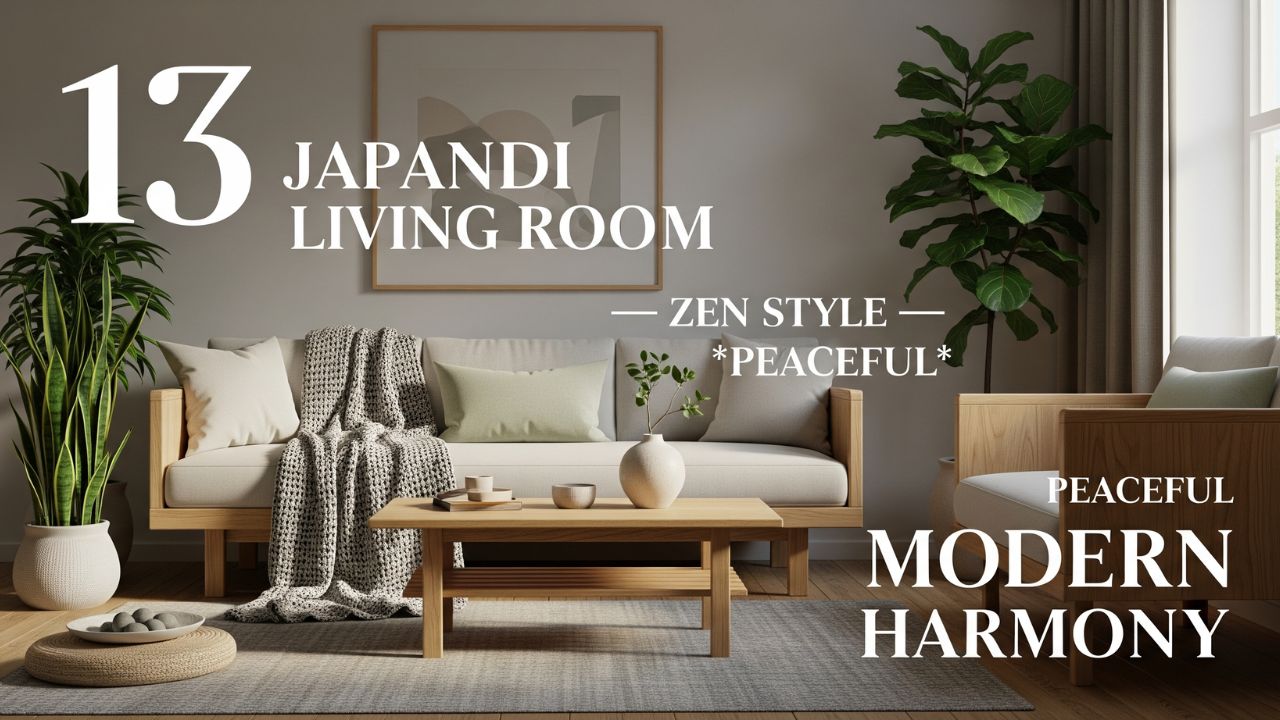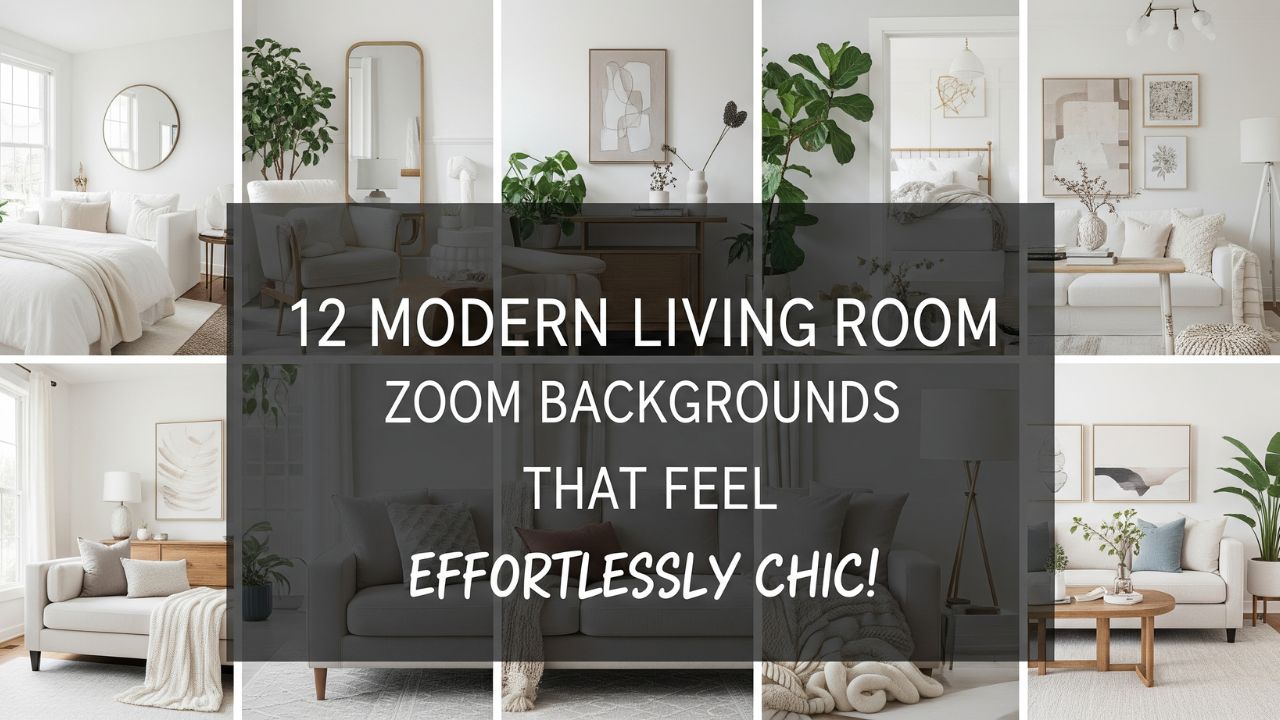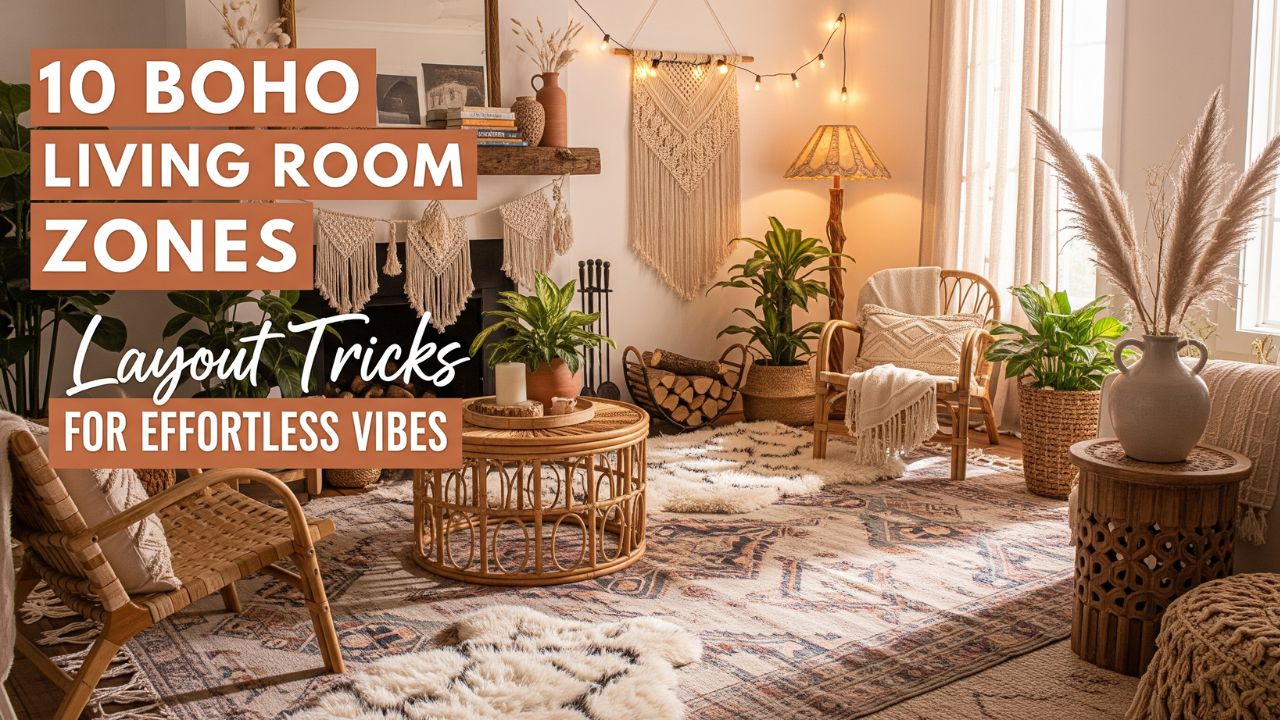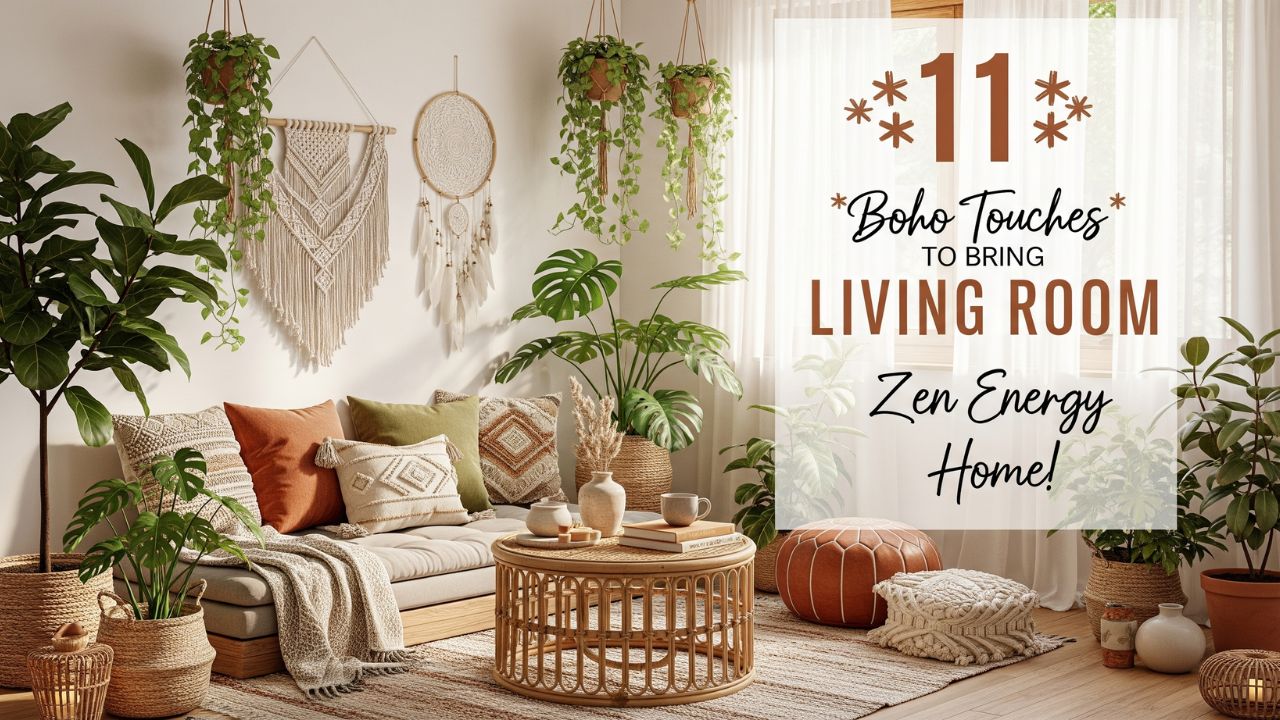Are you ready to transform your living room into a serene, minimalistic retreat? Picture a space that radiates tranquility, blending sleek Scandinavian design with the warm elegance of Japanese aesthetics.
That’s the magic of Japandi modern design — a fusion of two powerful, yet contrasting, styles that create a harmonious and balanced living environment.
In today’s post, we’ll explore 7 simple yet impactful Japandi modern inspirations that can instantly elevate your living room’s vibe. Whether you’re redecorating a small apartment or upgrading your home’s central space, these design ideas will help you create an inviting, calming atmosphere. Let’s dive in!

Table of Contents

7 Living Room Japandi Modern Inspirations
1. Neutral Color Palette with a Touch of Warmth
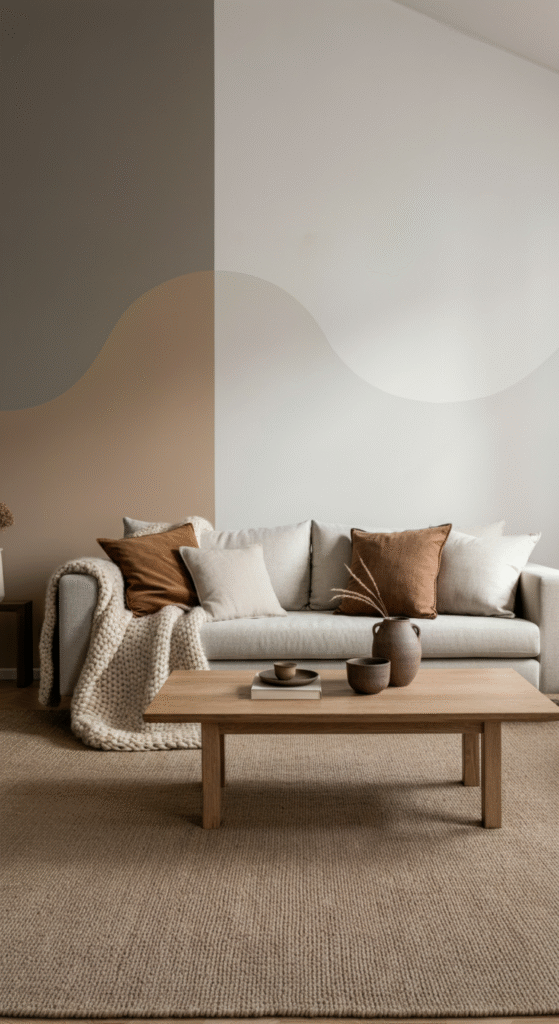
A neutral color palette is the cornerstone of Japandi modern design, where simplicity and tranquility take precedence. Think soft shades of beige, grey, taupe, and white. These tones create an airy, uncluttered feel that forms the perfect backdrop for the style’s minimalistic furniture and decor.
But here’s the twist: Japandi design isn’t about being cold or sterile. The secret is adding touches of warmth. A rich wooden coffee table, a cozy woolen throw, or warm-toned cushions can seamlessly add comfort and elegance to your living room.
Do you know? The Japanese use earthy, muted tones in their homes to mimic the natural world. By combining Scandinavian simplicity with Japanese craftsmanship, Japandi allows you to feel the connection between nature and home.
2. Streamlined Furniture with Clean Lines
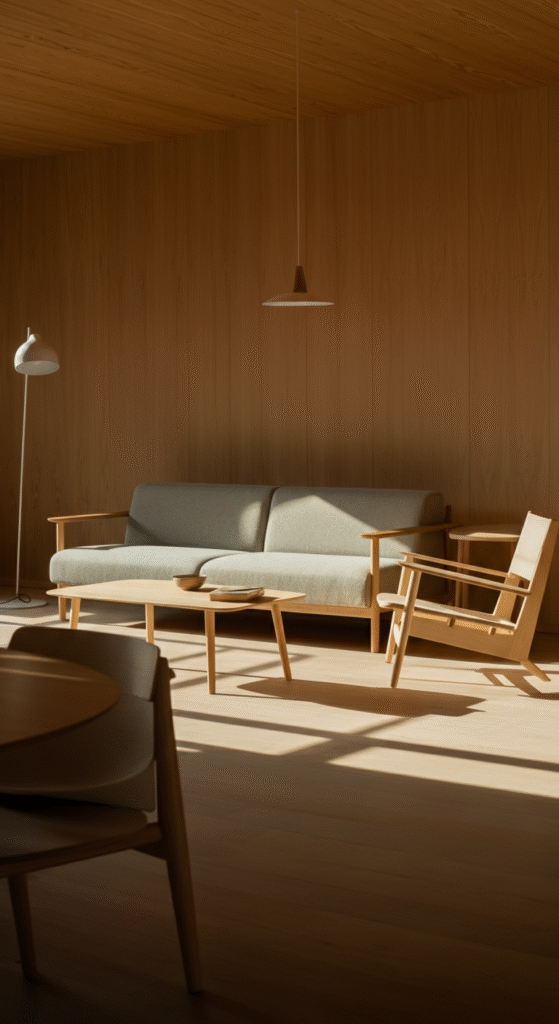
The key to a Japandi living room is furniture that is both functional and aesthetically pleasing. Look for pieces with clean lines, natural wood textures, and simple silhouettes. Opt for low-profile sofas, minimalistic chairs, and sleek tables that allow your space to breathe without overwhelming it.
Consider furniture made of oak, walnut, or bamboo. These materials bring a natural charm to the room while promoting longevity. Japandi design doesn’t rely on excess, but rather on the quality of each piece.
Interesting Fact: Scandinavian furniture is known for its timeless designs, while Japanese craftsmanship emphasizes high-quality, durable materials. By combining both, you get a living room that is not only beautiful but also built to last.
3. Bringing Nature Indoors: Greenery and Natural Elements
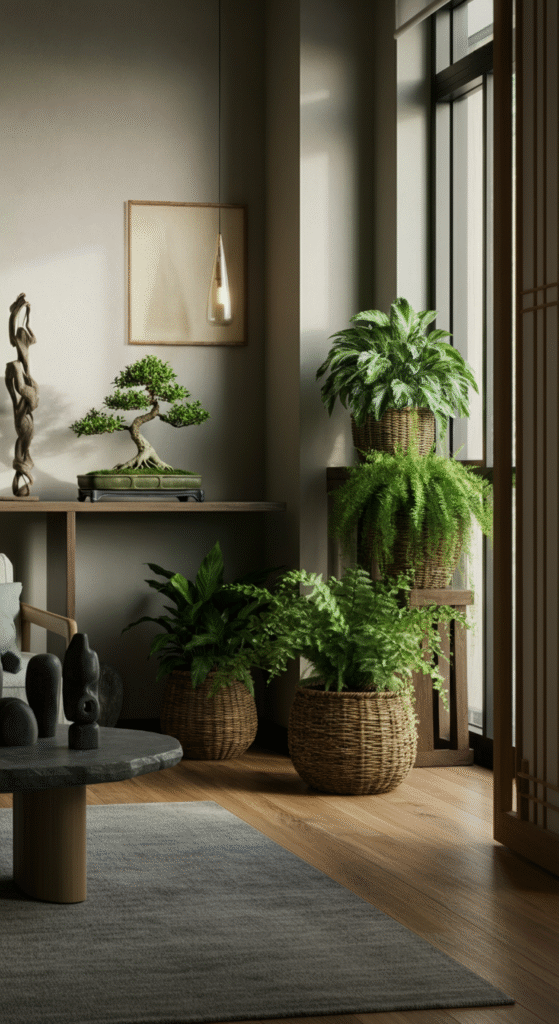
Plants are an essential part of Japandi decor, not only adding life to your living room but also contributing to the calming, nature-inspired atmosphere. Indoor plants like bonsais, snake plants, or ferns bring a peaceful vibe and are often strategically placed in corners, on shelves, or in decorative pots.
Besides plants, natural materials like wood, stone, and woven textiles further emphasize the connection to nature. Wooden beams, stone walls, and a mix of soft rugs and woven baskets will ground the space in the organic beauty that defines Japandi.
Did you know? The Japanese term “Shinrin-yoku,” or “forest bathing,” refers to the therapeutic practice of immersing oneself in the sights, sounds, and smells of nature. Bringing plants into your living room helps you achieve a similar sense of calm and serenity.
4. Statement Lighting with Simplicity and Purpose
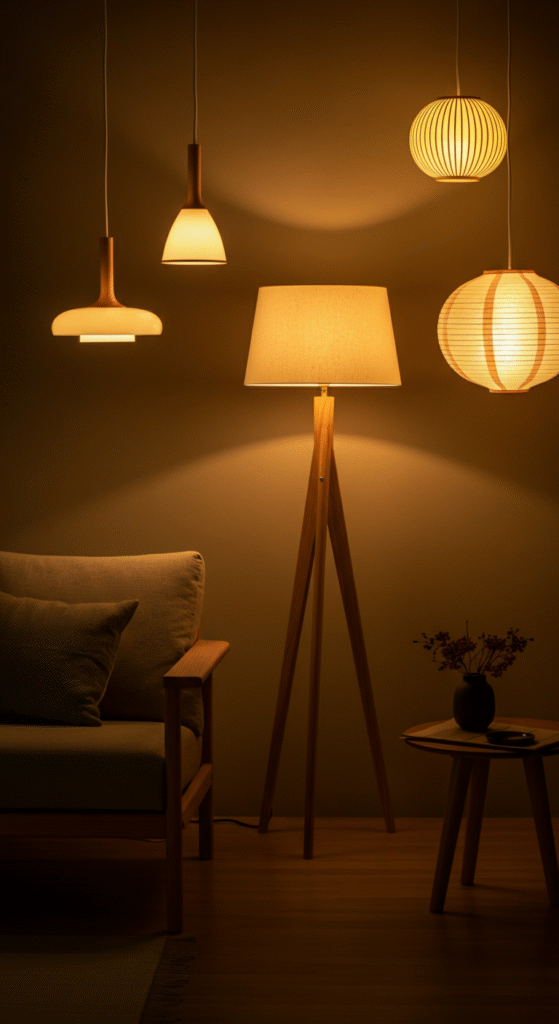
Lighting in Japandi interiors is functional and thoughtfully designed, with a strong emphasis on simplicity and soft tones. Choose sleek pendant lights or paper lanterns, which give off a warm, diffused glow.
For added effect, consider using floor lamps or wall sconces that match the minimalist aesthetic. Japandi lighting should feel serene, never harsh, and should complement the overall vibe of your living room.
Myth Buster: Some people believe that lighting in minimalistic interiors has to be boring and plain. However, a well-designed light fixture can be a focal point that brings style and character to the space while maintaining the balance of simplicity.
5. Functional Decor and Art with Purpose
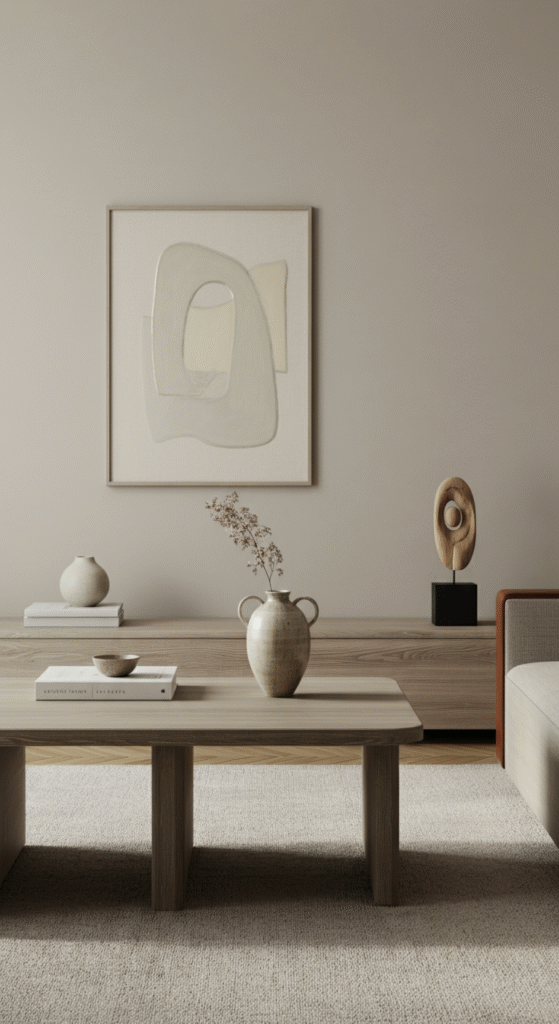
In Japandi interiors, decor and art are not about excess — they are about purpose. Each piece you choose should serve a function or convey a meaningful story. Think handcrafted ceramics, minimalist wall art, and simple vases filled with dried flowers.
Keep the decor sparse and intentional. A statement piece, such as a large, framed abstract painting or a sculptural vase, can add personality while still adhering to the minimalist principle of less is more.
Fun Fact: The Japanese philosophy of “Kintsugi,” the art of repairing broken pottery with gold, embodies the idea of celebrating imperfections. Incorporating elements like a Kintsugi-inspired vase or artwork adds depth and uniqueness to your space.
6. Create Cozy Corners with Low Furniture
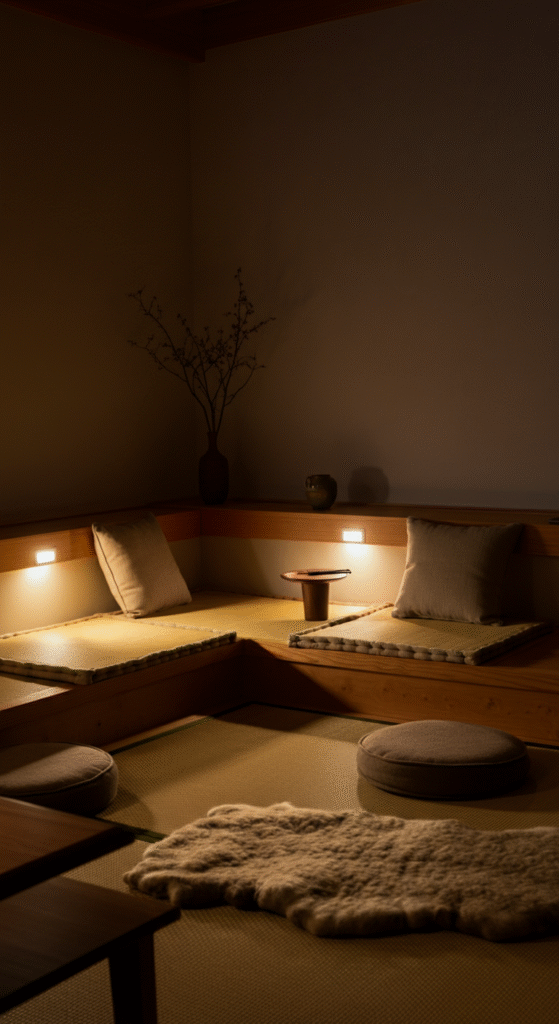
A key feature of the Japandi style is the creation of cozy, inviting spaces within your living room. Think low, comfortable furniture that encourages lounging and relaxation. A low-profile armchair or floor cushions placed around a coffee table creates a welcoming, informal space perfect for reading or socializing.
When arranging your furniture, consider using the floor plan to foster a sense of intimacy. Group furniture in a way that promotes conversation while maintaining the simplicity and elegance characteristic of Japandi style.
Interesting Fact: Japanese homes often include tatami mats, which encourage people to sit or lie down on the floor. Similarly, in Scandinavian countries, floor seating encourages a relaxed and communal atmosphere.
7. Minimal Clutter: Embrace Negative Space
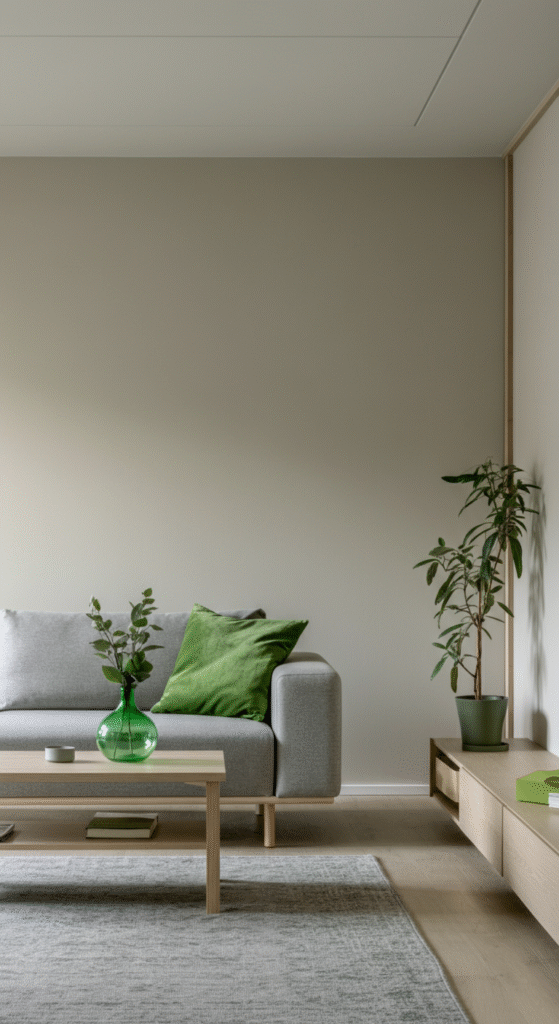
One of the hallmarks of Japandi style is the use of negative space — the areas in your living room that are intentionally left open and uncluttered. The concept emphasizes the beauty of simplicity and allows each element of your decor to stand out without distractions.
To maintain this look, keep only the essentials visible. Use storage solutions like sleek, hidden cabinets or minimalist shelving to keep your space tidy and organized. A decluttered space promotes peace and gives your living room a calm, zen-like quality.
Do you know? The Japanese concept of “Ma” refers to the space between things, and it’s highly valued in their design philosophy. In Japandi style, less is always more, and the use of negative space brings a sense of calm to your living room.
Conclusion
The beauty of Japandi modern design lies in its ability to marry two distinct cultural influences into one harmonious style. By embracing neutral tones, natural materials, simple yet functional furniture, and minimalist decor, you can create a living room that feels both stylish and serene.
Whether you’re drawn to the clean lines of Scandinavian design or the serene, nature-inspired elements of Japanese interiors, the Japandi aesthetic has something to offer everyone.
So, are you ready to introduce Japandi modern inspirations into your home? By following these simple tips, you’ll be well on your way to transforming your living room into a peaceful retreat that promotes balance, calm, and timeless beauty.
Frequently Asked Questions (FAQs)
What is Japandi design, and how is it different from Scandinavian design?
Japandi design is a fusion of Scandinavian and Japanese interior styles, blending the clean, minimalist lines of Scandinavian design with the warm, nature-inspired elements of Japanese aesthetics. The primary difference lies in the emphasis on natural materials, organic textures, and a peaceful atmosphere in Japandi, which blends the simplicity of Scandinavian style with the rich, tranquil feel of Japanese interiors.
Can I mix Japandi design with other styles in my living room?
Yes, Japandi design is versatile and can easily be mixed with other design styles. While it emphasizes minimalism, you can blend it with industrial, bohemian, or modern elements, provided that the core principles of simplicity, functionality, and natural materials remain intact. Just be sure to maintain a balance and avoid overcrowding the space with too many contrasting elements.
What are the key materials used in Japandi design?
Key materials in Japandi design include wood (especially light oak and walnut), bamboo, stone, wool, and linen. These materials help create a natural, earthy feel, with a focus on craftsmanship and sustainability. Textures like woven fabrics and ceramic pottery are also common, adding depth and warmth to the space.
How can I create a calming atmosphere in my Japandi living room?
To create a calming atmosphere, focus on neutral color palettes like soft whites, grays, and muted tones. Incorporate natural light, plants, and functional yet aesthetically pleasing furniture. Keep clutter to a minimum by using smart storage solutions, and choose decor that promotes relaxation, such as soft, cozy throws, simple art pieces, and low-profile seating.
Can I use bold colors in a Japandi-inspired living room?
While Japandi design leans toward neutral and muted tones, you can incorporate bold colors sparingly. Consider adding subtle pops of color through small accents like cushions, vases, or artwork. The key is to maintain harmony and avoid overpowering the calming essence of Japandi style. Choose deep, earthy colors like navy blue or forest green for a touch of drama without disrupting the tranquility.
